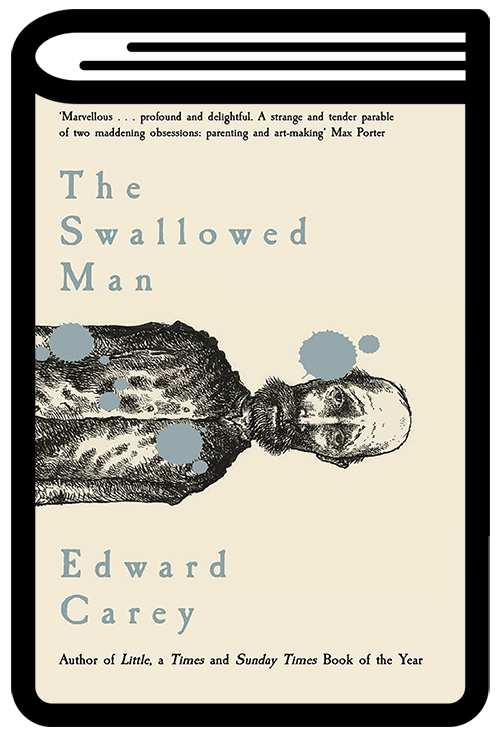‘I am writing this account, in another man’s book, by candlelight, inside the belly of the fish. I have been eaten. I have been eaten, yet I am living still.’
As opening sentences go, this scene-setter from Edward Carey’s The Swallowed Man is as close to perfect as any I’ve read this year. How can one do anything but read on? Thankfully, as hooks go, this is a singularly rewarding one. A re-imagining of Pinocchio astold from the viewpoint of the beast-entrapped Geppetto, it surprise and delights, saddens and gladdens, from start to finish.

Carey amassed a set of evangelical followers after his eccentric novel, Little, the fictionalised story of Marie Grosholtz, the real life Madame Tussaud. The Swallowed Man sees him carry further his fascination with marionettes and mannequins (he once worked as a steward at Madame Tussauds) and it’s tempting to regard this as a kind of second cousin to Little; the ship Geppetto finds inside the sea monster is even called Maria, surely a nod to Grosholtz.
Another returning pleasure is that of Little’s idiosyncratic tone, an oddly formal and antiquated first person voice reminiscent of, rather appropriately, Herman Melville and fellow adventurer Robert Louis Stevenson, with a prankster pinch of Tim Burton.
Poetic turns of phrase seem to come to Carey like unsolicited dreams
It is enhanced by Carey’s surreal sense of humour (‘You have dwarfed poor Ernesto’ scolds Pinocchio, referring to the wooden pencil which has been emasculated by its owners constant sharpening). Fans of Carey’s quaint, prose-illuminating sketches will also be pleased to know there are plenty more scattered throughout The Swallowed Man.
Scribbling his diary in the overwhelming gloom of the cavernous fish belly, old Geppetto reflects on the strange life of the puppet his “sacred magic” carved out of wood, whom he grew to love with a slow-burning intensity.









